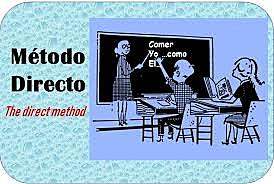Methods of teaching English.
Audiolingual METHOD
Foreign language learning is basically a process of mechanical habit formation. Good habits are formed by giving correct responses rather than by making mistakes. By memorizing dialogues and performing pattern drills the chances of producing mistakes are minimized. Language is verbal behavior – that is, the automatic production and comprehension of utterances – and can be learned by inducing the students to do likewise.
The characteristics of this
method are:
The formation of habits
through repetition.
Great importance is given to
the development of oral expression and comprehension rather than writing.
The mother tongue is not used,
it is always spoken in the language that is intended to be taught.
Grammar is taught indirectly,
with students learning it by listening.
Use positive reinforcement for the formation of good habits.
Types of learning and teaching activities
Repetition. The student repeats an utterance aloud as soon as he has heard it. He does this without looking at a printed text. The utterance must be brief enough to be retained by the ear. Sound is as important as form and order.
Example This is the seventh month. –This is the seventh month
This method seems quite
effective to me for the real world where students are expected to improve their
oral and conversation skills. Only when the student comes into direct contact
with the language they want to learn is their learning achieved. This method is
quite practical.
Reference
Richards, J., & Rodgers, T. (2001) The Audiolingual Method. In Approaches and Methods in Language Teaching (Cambridge Language Teaching Library, pp. 50-70). Cambridge: Cambridge University Press. https://doi-org.bibliotecavirtual.unad.edu.co/10.1017/CBO9780511667305.006
THE GRAMMAR-TRANSLATION METHOD
This
method is one of the most used by the teacher during the entire observation
practice and it is one of the methods that continues to be used more frequently
today. But, this method is not very effective for learning English at this time
when more interaction with speaking is required.











